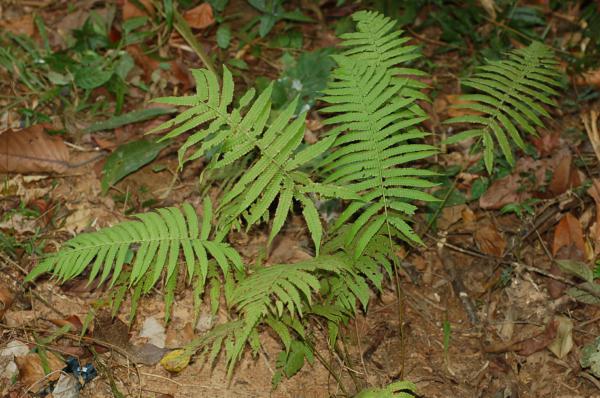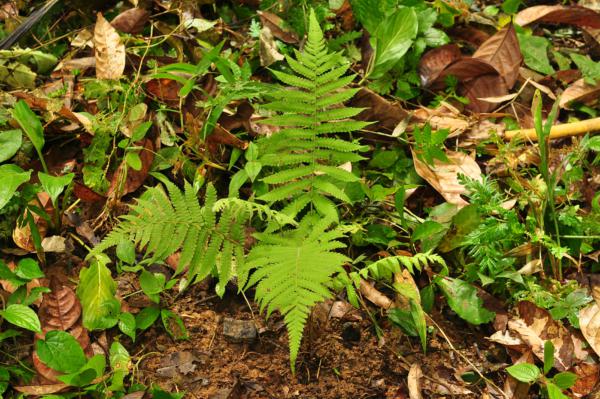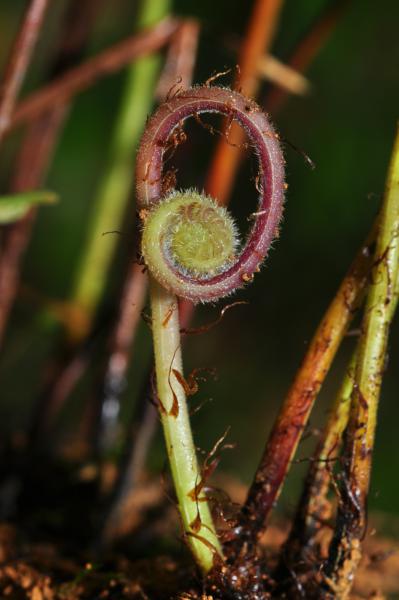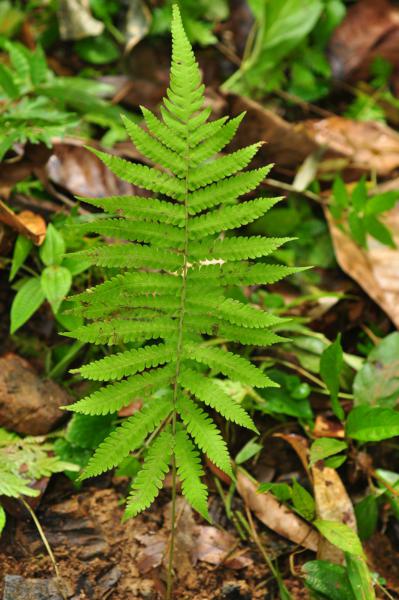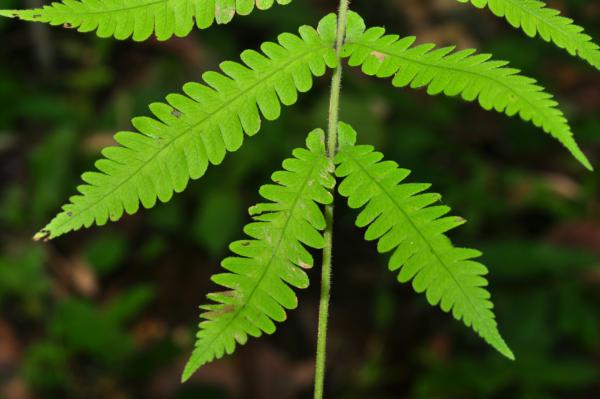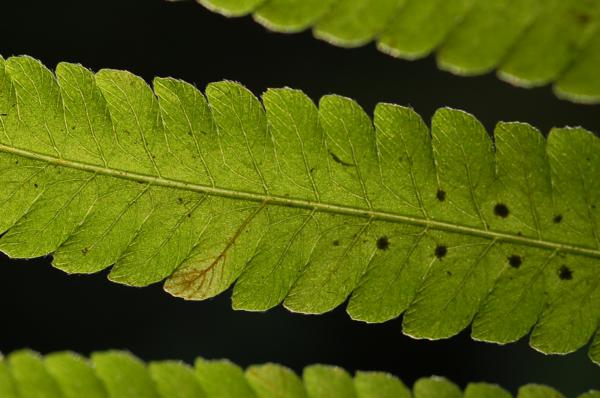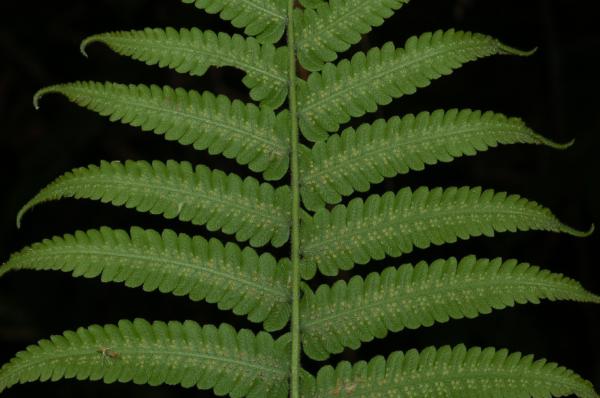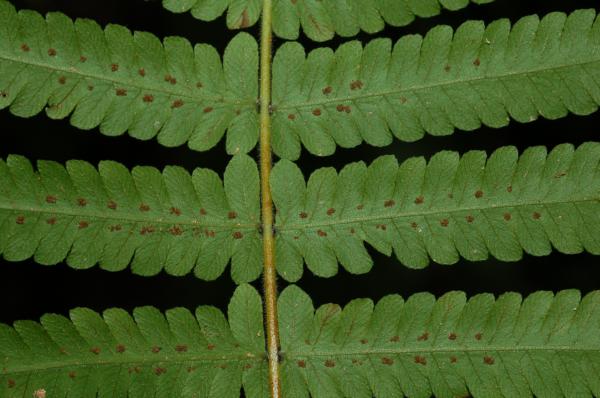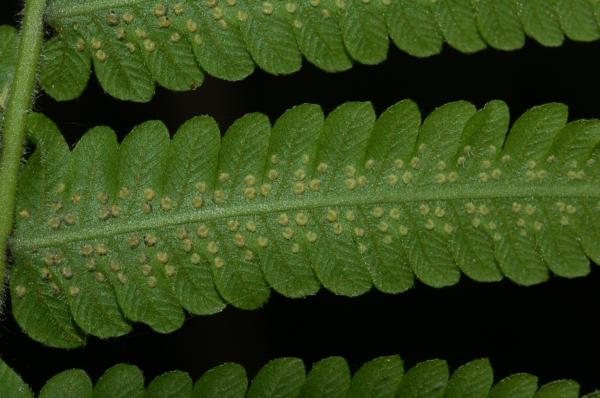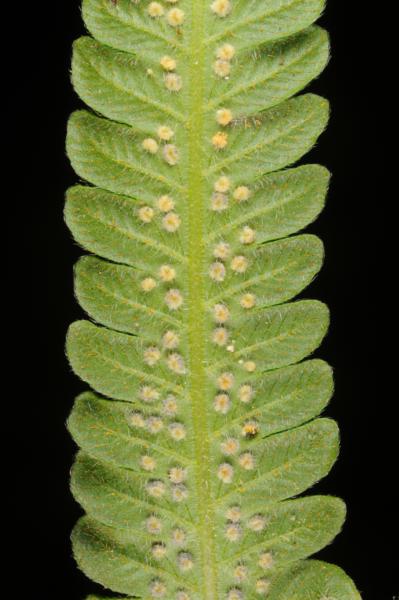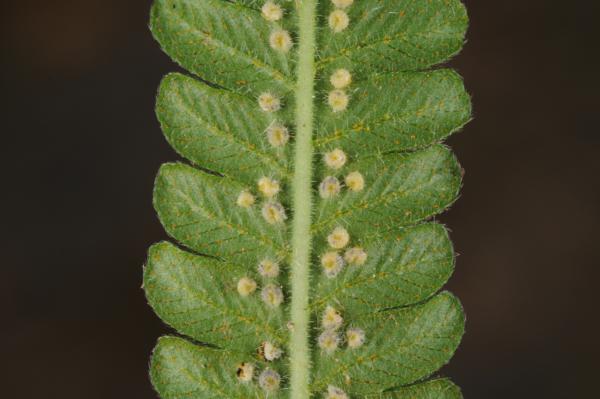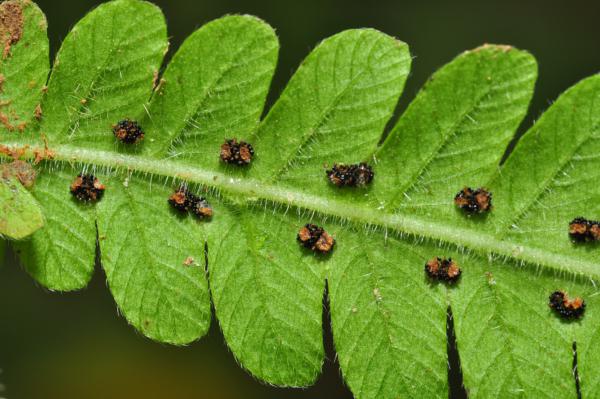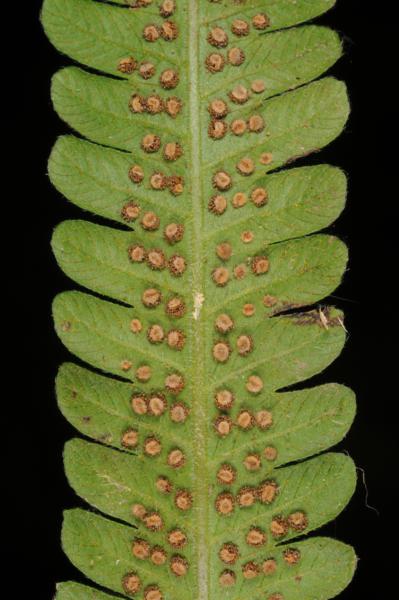
Cyclosorus parasiticus (L.) Farw.
Family
Thelypteridaceae
Nomenclature
Cyclosorus parasiticus (L.) Farw., Amer. Midl. Nat. 12: 259. 1929; Ching, Bull. Fan Mem. Inst. Biol. 8: 201. 1938; Tardieu & C.Chr., Fl. Indo-Chine 7(2): 381. 1941; Holttum, Rev. Fl. Malaya ed. 1, 2:281, f. 162. 1955 [‘1954’]; Holttum, Dansk Bot. Ark. 23: 233. 1965. – Polypodium parasiticum L., Sp. Pl. 2: 1090. 1753. – Dryopteris parasitica (L.) Kuntze, Rev. Gen, pl. 2: 811. 1891; C.Chr., Bot. Tidskr. 32: 343. 1916. – Aspidium parasiticum (L.) Christ, Bot. Tidsskr. 24: 109. 1901. – Christella parasitica (L.) H.Lév., Fl. Kouy-Tcheou: 475. 1915; Holttum, Kew Bull. 31: 309. 1976; Holttum, Fl. Males., Ser. II, Pterid. 1: 559, f. 20f. 1982 [‘1981’]; Boonkerd & Pollawatn, Pterid. Thailand: 221. 2000. – Thelypteris parasitica (L.) Fosberg, Occas. Pap. Bernice Pauahi Bishop Mus. 23: 30. 1962; K.Iwats., J. Jap. Bot. 38: 315. 1963; Tagawa & K.Iwats., SouthE. Asian Stud. 3(3): 79. 1965; Tagawa & K.Iwats., SouthE. Asian Stud. 5: 65. 1967; Tagawa & K.Iwats., Fl. Thailand 3: 424. 1988. – Type: Osbeck, Canton (S-PA in Herb. Swartz).
Nephrodium amboinense auct. non C.Presl: Hosseus, Beih. Bot. Centralbl. 28(2): 365. 1911.
Description
Rhizome short to long creeping, about 8 mm diam.; scales narrow, up to 12 by 1 mm, pale to dark brown, with a few hairs at margin. Stipes 17–51 cm long, scaly at base, hairy throughout. Laminae oblong-lanceolate, acute at apex, 25-56 by 8–26 cm; 17–22 pairs of free pinnae, basal pinnae deflexed, lower pinnae patent or ascending, linear-lanceolate, sessile at acroscopic base, 4.3–16 by 0.9–2 cm, lobed more than half-way towards costa; segments oblong, oblique, rounded at apex, entire; thinly papyraceous, yellow-green to green, hairy on under surface; basal pairs of veins anastomosing, the other veinlets running to margin of lobes, glandular; glands sessile, rod-shaped, orange to red. Sori supramedial, usually not on lobes, i.e. on one or two basal veinlets; indusia persistent, hairy .
Distribution in Thailand
NORTHERN: Chiang Mai, Chiang Rai, Lampang, Tak, Phitsanulok; NORTH-EASTERN: Loei; EASTERN: Chaiyaphum; SOUTH-WESTERN: Phetchaburi; SOUTH-EASTERN: Chon Buri, Chanthaburi, Trat; PENINSULAR: Surat Thani, Phangnga, Nakhon Si Thammarat, Trang, Satun.
Distribution in Laos
Unspecified.
Distribution in Cambodia
Mondulkiri.
Wider Distribution
Tropics and subtropics in Asia, north to S Japan and south to New Zealand.
Ecology
On rather dry slopes along path in open places or in evergreen forests at low to medium altitudes.
Proposed IUCN Conservation Assessment
Least Concern (LC). This species is widespread and not under any known threat.
Voucher specimens - Thailand
Middleton et al. 4658, Chanthaburi, Namtok Phlio National Park (E); Middleton et al. 4789, Phetchaburi, Kaeng Krachan National Park (E); Middleton et al. 4790, Phetchaburi, Kaeng Krachan National Park (E); Middleton et al. 5351, Satun, near Thale Ban National Park (E).
Voucher specimens - Cambodia
Long et al. CL403 & CL463, Mondulkiri (P).
Habit
Habit
Crozier
Frond
Basal pinnae
Venation
Pinnae
Lower surface of rachis and pinnae
Lower surface of pinna
Young sori
Young sori
Mature sori
Old sori
Site hosted by the Royal Botanic Garden Edinburgh. Content managed by Stuart Lindsay, Gardens by the Bay, Singapore and David Middleton, Singapore Botanic Gardens. Last updated 24 January 2012
